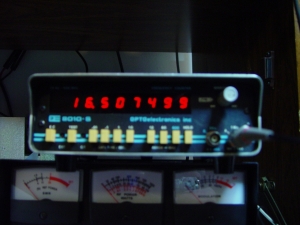Was basically listening earlier on AM and some local on ch 27,2850 , sounded good but when I adjusted my frequency display to 27,2870 he sounded a bit better.
How does one know if their receive or transmit is out of whack , or cant they? Earlier, I was playing around on lsb 27,7900 , they guy I made contact with said I was on the wrong frequency or something, I dont recall his exact words but i think he said they were a few Hz higher or lower than what I was dialed in ( 27,7900 ) , i think he said he was on 277890 or something.
How does one know if their receive or transmit is out of whack , or cant they? Earlier, I was playing around on lsb 27,7900 , they guy I made contact with said I was on the wrong frequency or something, I dont recall his exact words but i think he said they were a few Hz higher or lower than what I was dialed in ( 27,7900 ) , i think he said he was on 277890 or something.



